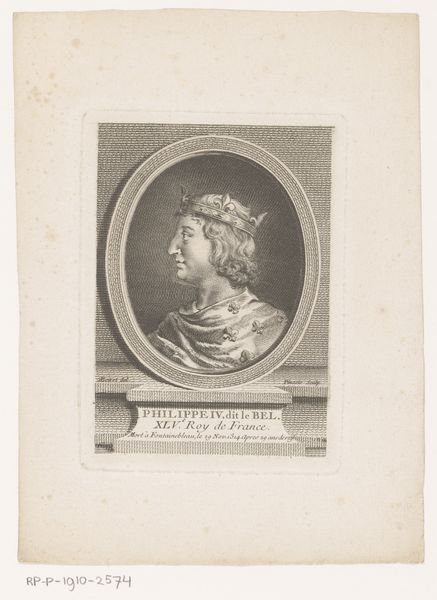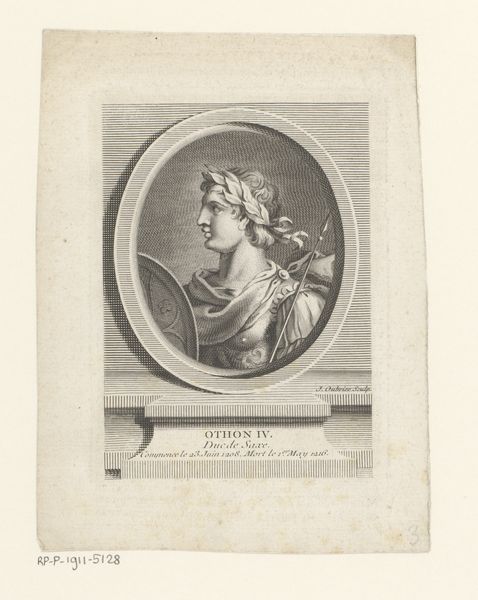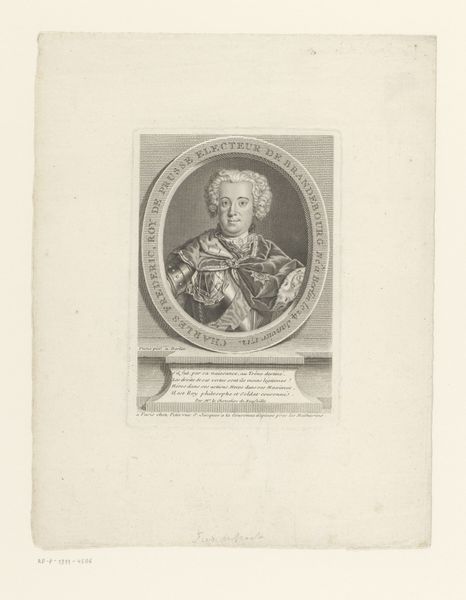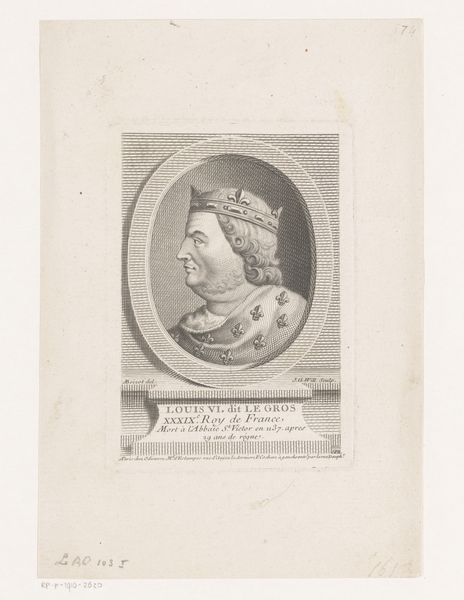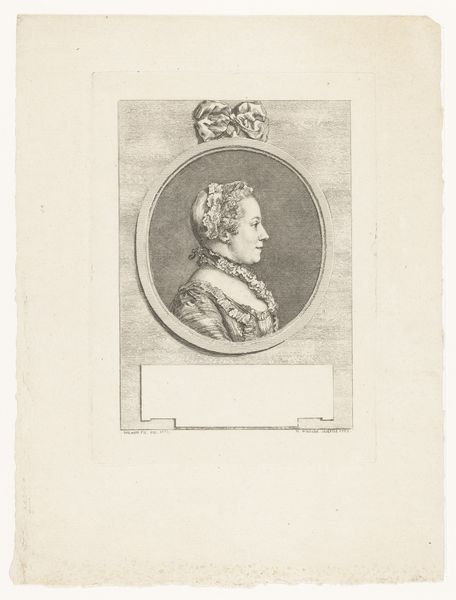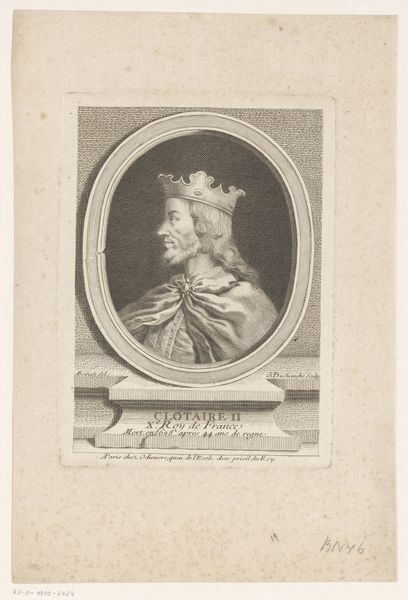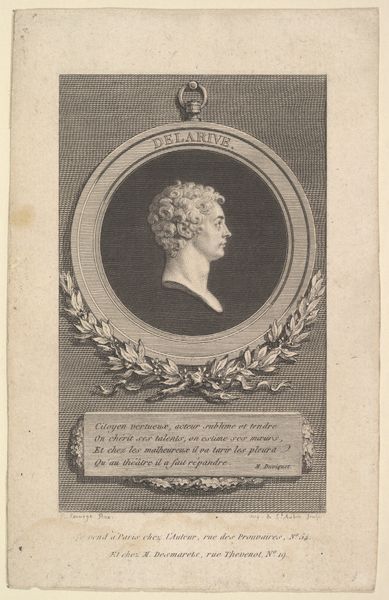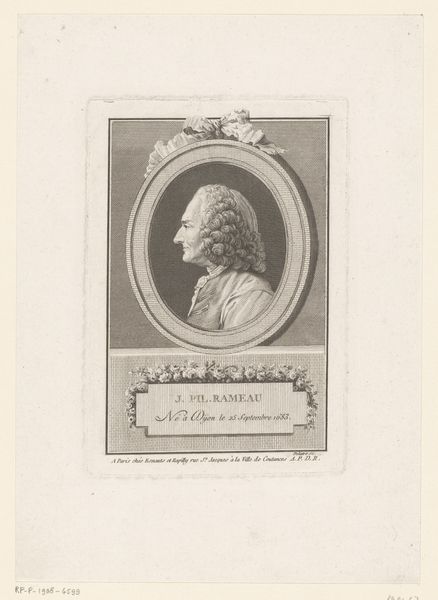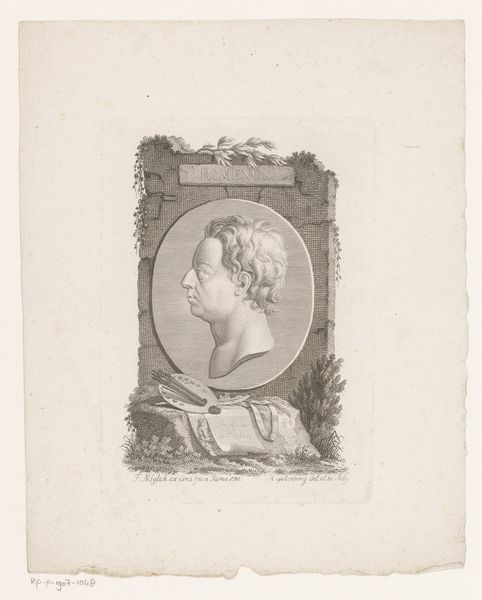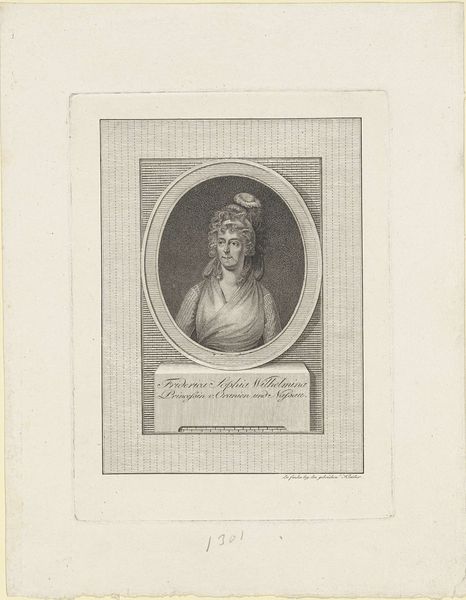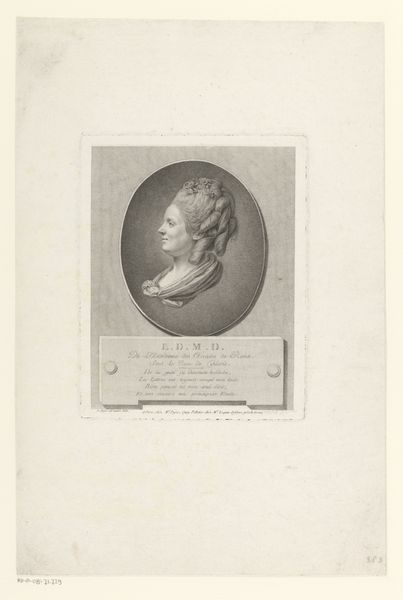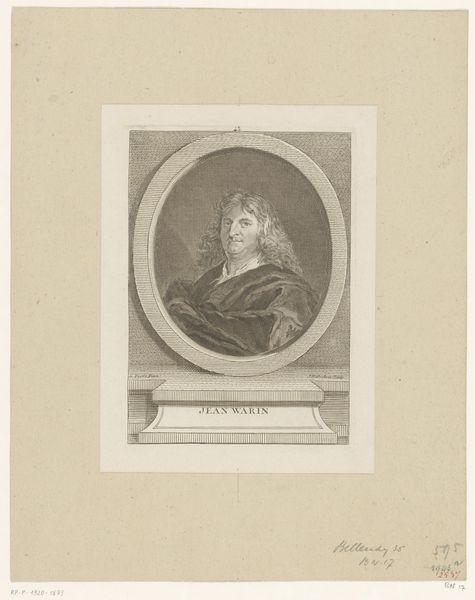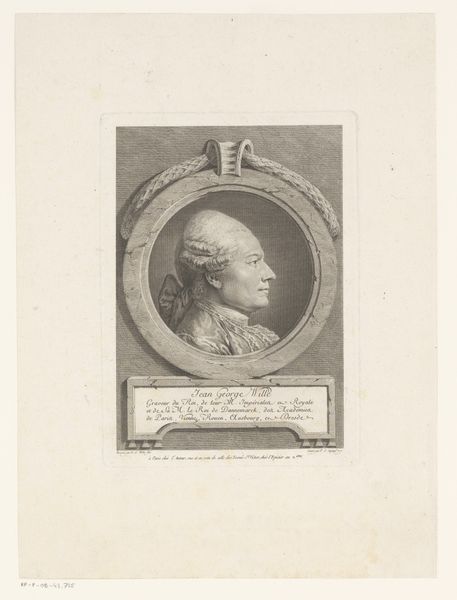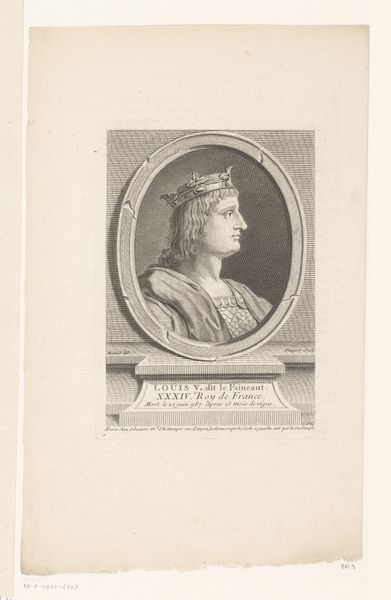
print, paper, engraving
#
portrait
#
baroque
#
ink paper printed
#
parchment
# print
#
light coloured
#
old engraving style
#
paper
#
history-painting
#
engraving
Dimensions: height 151 mm, width 111 mm
Copyright: Rijks Museum: Open Domain
Curator: This is a print by Etienne Fessard, dating from 1741 to 1755. It's titled "Portret van Lodewijk III van Frankrijk en Karloman II" or "Portrait of Louis III of France and Carloman II" in English. Editor: My initial impression is of austere regality. The monochrome palette and precise lines evoke a strong sense of historical formality, despite the somewhat simplistic composition. Curator: Simplistic, perhaps, but the material and the making process are essential to understanding it. This is an engraving, a readily reproducible medium. It speaks to the desire for these royal images to circulate, embedding ideas of power within a growing public sphere. Editor: I see it more as an exercise in contrasts. Notice the sharply defined profiles versus the subtle gradations within the oval frame. This creates depth while emphasizing their distinct physiognomies. What do you make of the textual inscription below the portrait itself? Curator: Ah, that's critical! The text isn't merely descriptive; it's adding another layer, transforming this portrait into something akin to historical record. We're seeing power made manifest through a printing press; etched lines becoming legacies, for wide consumption. Editor: True, but look closer at how Fessard has structured the composition. The strong verticality emphasizes their importance. Even the light source, from above and slightly to the right, directs our gaze specifically to their crowned heads, almost lifting them from the parchment. Curator: Precisely! The materiality facilitates accessibility while strategically reinforcing their image. It would have been fascinating to analyze where such images were displayed; understanding its consumption is key to unraveling its purpose beyond aesthetic appreciation. Editor: A pertinent point; after observing it this closely, the strategic intent in the engraving, it feels far more constructed as a work and less about accurate representation than I initially considered. Curator: It’s a complex piece when you consider its role in disseminating the symbolism of French royalty within society at the time. Editor: I agree; it leaves me considering the role of portraits and the narratives they propagate about authority.
Comments
No comments
Be the first to comment and join the conversation on the ultimate creative platform.
